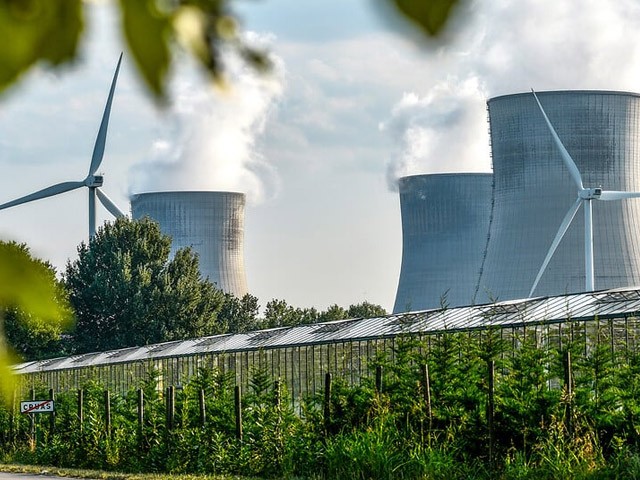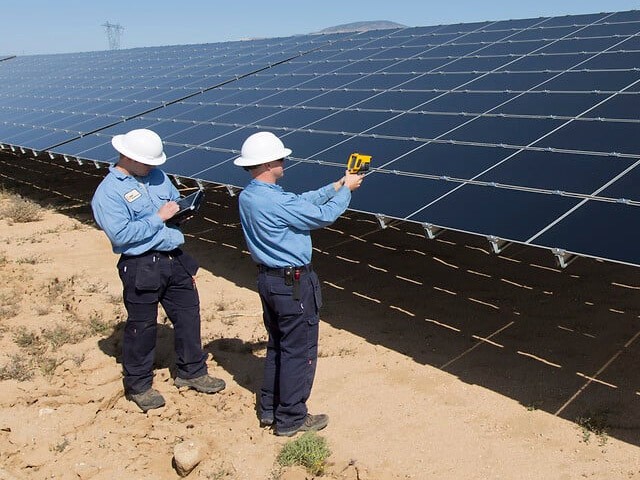Net zero emissions by 2050
EDF group is the world's leading producer of decarbonised electricity, i.e. produced without direct CO₂ emissions (1). As a leader in the decarbonisation of the economy, and in line with its Raison d’être to build a net zero energy future, the EDF group has set itself the goal of achieving "Zero net emissions" across all its activities by 2050. This commitment covers greenhouse gas emissions across scopes 1, 2 and 3 and all geographic regions. To mobilize accordingly, the Group is implementing a climate transition plan, supported at the highest levels of governance of the Group. This long-term ambition is supported by short- and medium-term reduction targets that are established and reviewed regularly. They are reflected in emission trajectories for all the Group's businesses and entities.
| 2027 | 2030 | 2035 |
by 2050 |
|
|
Scope 1 (compared to 2017) 51,3 MtCO₂e in 2017 |
-65 % 18 MtCO₂e |
-70 % 15.5 MtCO₂e |
-80 % 10.5 MtCO₂e |
|
| Carbon intensity of electricity and heat production (gCO₂/kWh) | 30 g | 22 g | ||
|
Total scope 3 and scope 3 – gas sales (compared to 2019) |
-30 % 83.6 MtCO₂e |
-35 % 77.6 MtCO₂e |
-45 % 65.7 MtCO₂e |
In 2020, EDF group's strengthened trajectory of CO₂ emissions reduction were approved by Science Based Targets SBTi (2) on a "Well Below 2°C" pathway.
In February 2024, EDF group's emission reduction targets were validated by Moody's (scope of EDF Ltd) as being in line with a + 1.5°C global warming scenario (consult the score).
In 2024, MSCI issued an assessment of 1.3°C implied temperature rise to EDF for the scope of EDF Ltd. An Implied Temperature Rise of below 1.5°C indicates that Électricité de France is in line with the Paris agreement's maximal goal of keeping global mean temperature to 1.5°C (3).
In 2024, TPI has validated EDF's emissions trajectory in line with the + 1.5°C global warming scenario for 2035 (consult the score).
2025 marks the 10th anniversary of the Paris Agreement, which motivated the development of ambitious climate policies in Europe and around the world. EDF group can boast of having divided its direct scope 1 emissions by 3 since 2015 (from 60.4 MtCO₂e in 2015 to 16.8 MtCO₂e in 2024) and by 3 its carbon intensity (from 95 gCO₂/kWh in 2015 to 30 gCO₂/kWh in 2024), while maintaining its title as the largest producer of decarbonised electricity in the world, i.e. produced without direct CO₂ emissions
(1) Source ENERDATA 2024 [PDF, 477 kb].
(2) Science Based Targets is a joint initiative from CDP, UN Global Compact, World Resources Institute et World Wild Fund launched following the Paris Agreement in 2015- Read the Press release about 2020 commitments.
(3) Reproduced by permission of MSCI ESG Research LLC ©2024. All rights reserved. No further reproduction or dissemination is permitted. See the Notice and Disclaimer for Reporting Licenses.
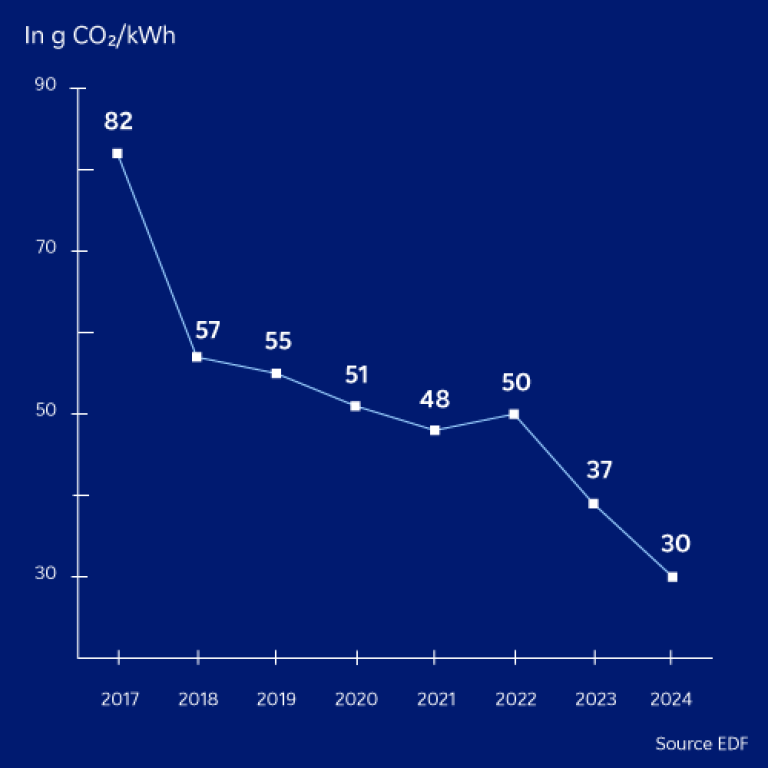
Transcript
EDF Group Carbon Intensity
- 82 gCO₂/kWh in 2017
- 57 gCO₂/kWh in 2018
- 55 gCO₂/kWh in 2019
- 51 gCO₂/kWh in 2020
- 48 gCO₂/kWh in 2021
- 50 gCO₂/kWh in 2022
- 37 gCO₂/kWh in 2023
- 30 gCO₂/kWh in 2024
Group carbon intensity
The carbon intensity of the Group's electricity and heat production amounts to 30 gCO₂/kWh* in 2024. This is one of the lowest-carbon productions among all electricity companies, approximately seven times lower than the European average (210 gCO₂/kWh) (1) and more than fifteen times lower than the world average (458 gCO₂/kWh) (2).
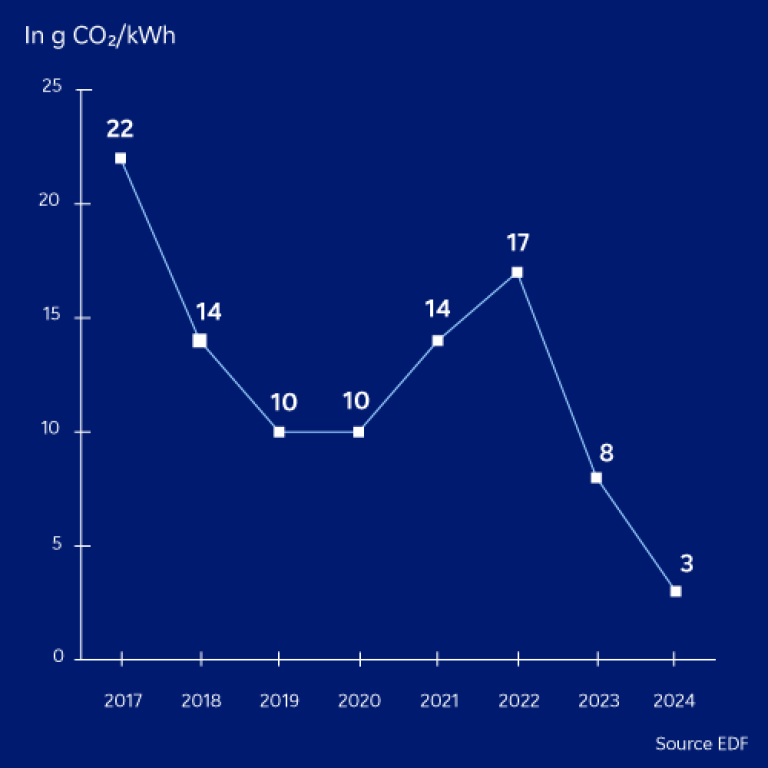
Transcript
EDF Carbon intensity in mainland France
- 22 gCO₂/kWh in 2017
- 14 gCO₂/kWh in 2018
- 10 gCO₂/kWh in 2019
- 10 gCO₂/kWh in 2020
- 14 gCO₂/kWh in 2021
- 17 gCO₂/kWh in 2022
- 8 gCO₂/kWh in 2023
- 3 gCO₂/kWh in 2024
Carbon intensity of EDF SA’s production in mainland France
In mainland France, thanks to a generation mix that is largely carbon-free, the carbon intensity of EDF’s electricity production is only 3 gCO₂/kWh* in 2024.
Note: A slight increase in carbon intensity was observed in 2021 and 2022 due to a stress corrosion cracking incident that led to a decrease in EDF’s nuclear production during those two years.
* Direct emissions, excluding life cycle analysis of generating plant and fuel.
(1) UE 27 value in 2023, European Environment Agency.
(2) 2023 value, AIE – World Energy Outlook 2024.
A concerted industrial policy that has paid off
To produce low-carbon electricity, the EDF group relies on a production mix mainly composed of nuclear, hydropower, variable renewable energies (wind, solar) and gas.
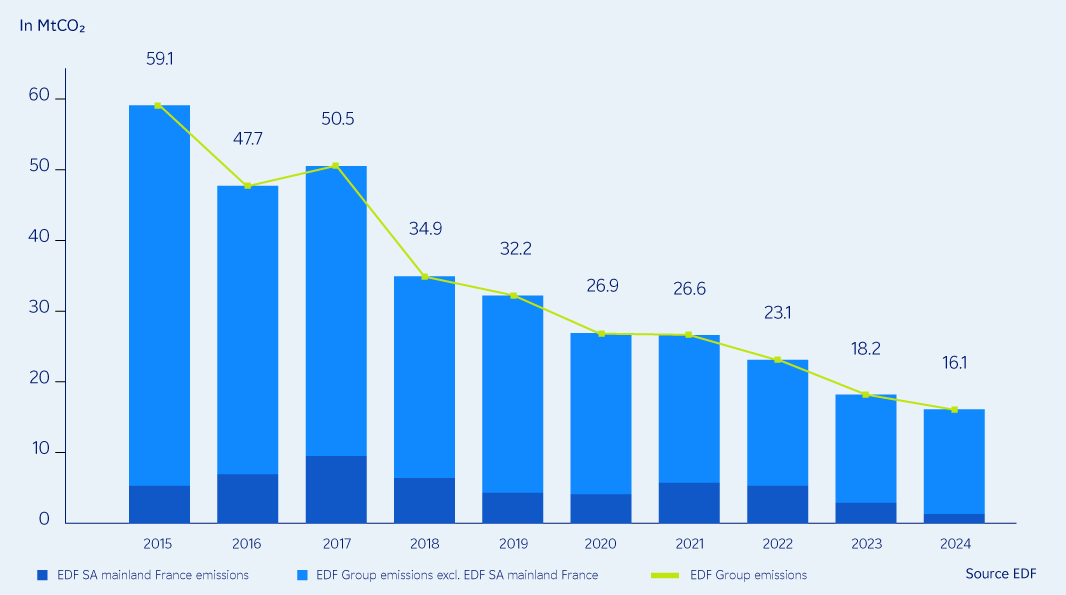
Transcript
EDF group direct emissions beetween 2015 and 2024
in MtCO₂
| EDF SA mainland France |
EDF Group excl. EDF SA mainland France |
EDF Group | |
| 2015 | 5.3 | 53.8 | 59.1 |
| 2016 | 6.9 | 40.8 | 47.7 |
| 2017 | 9.5 | 41.0 | 50.5 |
| 2018 | 6.4 | 28.5 | 34.9 |
| 2019 | 4.3 | 27.9 | 22.8 |
| 2020 | 4.1 | 22.8 | 26.9 |
| 2021 | 5.7 | 20.9 | 26.6 |
| 2022 | 5.3 | 17.8 | 23.1 |
| 2023 | 2.9 | 15.3 | 18.2 |
| 2024 | 1.3 | 14.8 | 16.1 |
The EDF group is one of the European utilities that has most actively contributed to phasing out coal-fired electricity production. Indeed, since the early 2000s, the EDF group has implemented and supported the closure of 33 coal-fired units and 15 heavy fuel oil units, representing nearly 18,000 MW of thermal capacity in France and the United Kingdom.
In 2025, the EDF group will operate only two coal units in Europe, both located at the Cordemais power plant (Loire-Atlantique). The final shutdown of the Cordemais plant, initially planned for 2022, is now scheduled for 2027, considering the needs expressed by RTE in its latest forecast reports.


